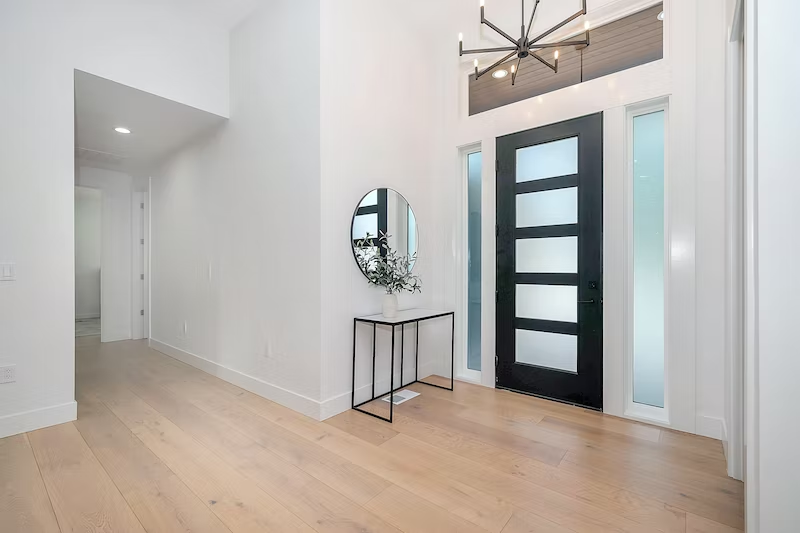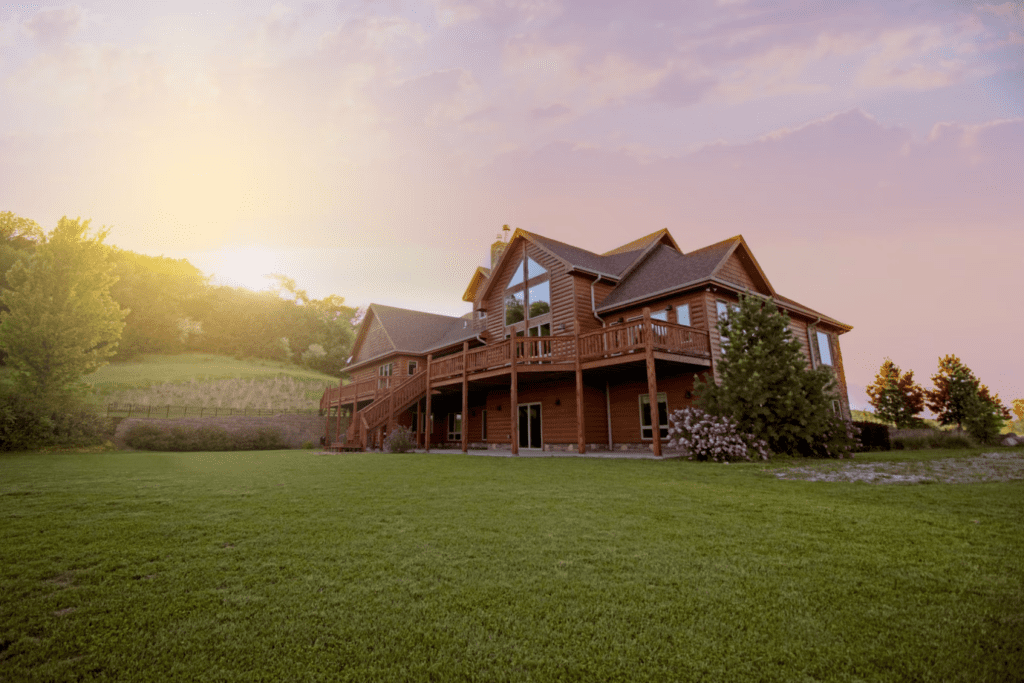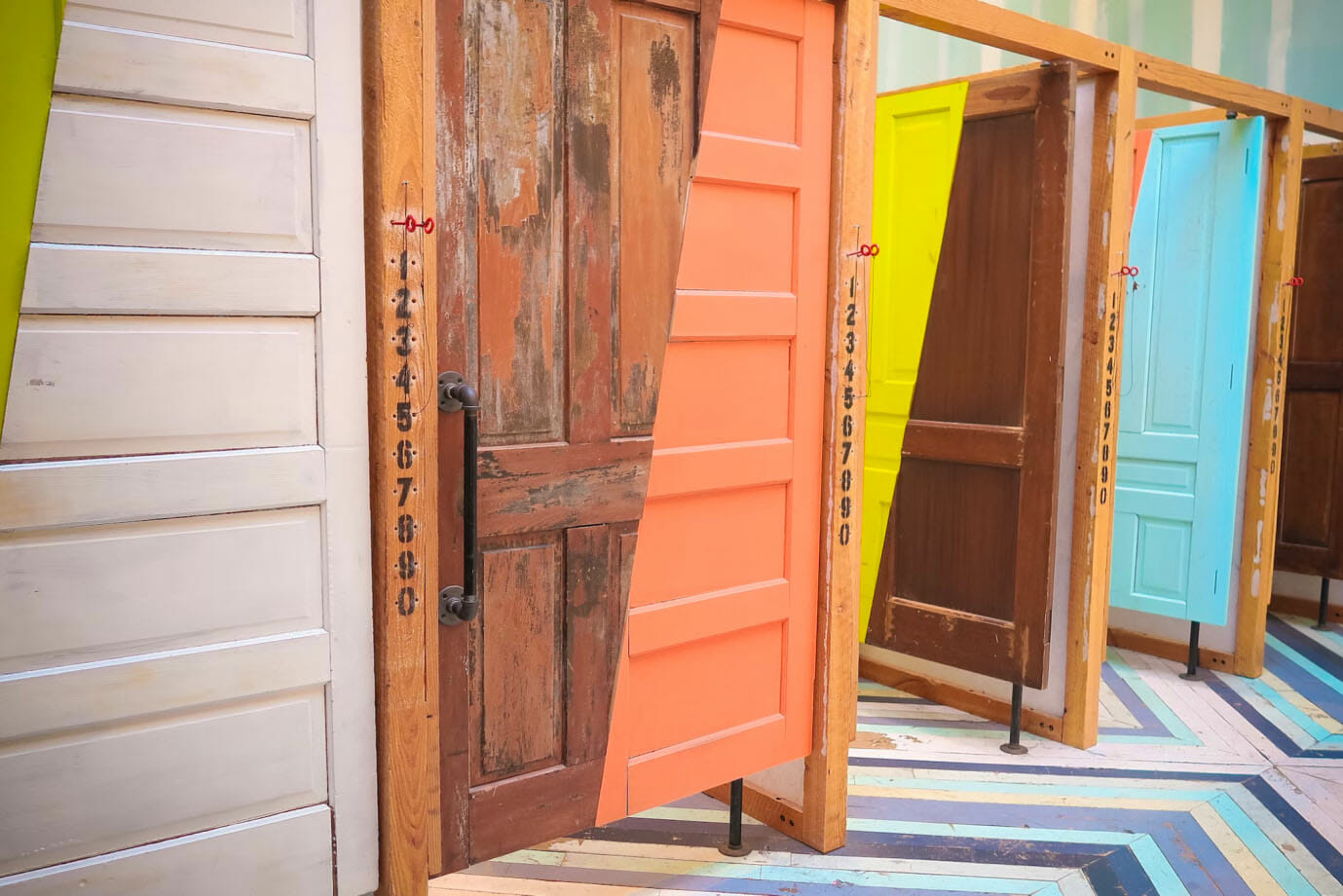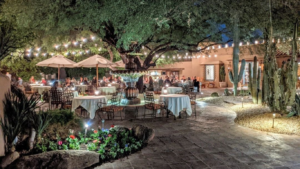Doors are one of the most frequently used components of any home. They are also an important element in your interior, which can both decorate the overall design and ruin it.
There are many styles and designs, which differ in the materials used, eras, and prevailing colors. It is crucial to learn different trends and features that distinguish one kind from another. Thus, you may choose the one that reflects exactly your personality, and also fits into the entire interior of your home.
The Most Popular Interior Door Styles and Designs
Art Deco:
A decoration technique that is rooted in the last century. We can say that it is a conductor between the old (in a good way) and the modern. It’s vintage and chic, characterised by bold geometric figures, straight lines, and smooth surfaces. Doors in the Art Deco often feature patterns or motifs, such as sunbursts or zigzags, and are typically made of materials such as glass, metal, or wood with a high-gloss finish. Such a design will add some elegance and captivation to your dwelling.
Colonial:
An eclectic mix of functional pieces with classic design elements. It’s all about the colonial interior. This trend originated hundreds of years ago but continues to be marketable due to its unique combination of texture and style.
Colonial mode is defined by clean lines, uncomplicated forms, and classic details. Solid mahogany or cherry is the most preferred material for house fittings; carving is then made on it. Colonial doors are often painted in muted colours, such as white or cream, to complement the overall traditional aesthetic of the space. Lovers of traditional charm and elegance will appreciate items with such a touch.
Contemporary:
A style with modern interior door design is widely used nowadays. Unique or oddly shaped frames, open floor plans, big windows, integrated indoor and outdoor spaces, and warm interiors are current characteristics of contemporary residences. They often feature large panes of glass or high-gloss finishes and can be made of materials such as wood, metal, or fibreglass.
Modern:
Modern interior doors are plain and minimalist, with sharp lines and simple decor. They often feature large panes of glass or bold, contrasting finishes. Modern doors can be made of materials such as wood, MDF, metal, or fibreglass and are perfect for spaces that require a contemporary and streamlined look.

Coastal:
What is the word “coast” associated with? Definitely with relaxation, sea air, and a light breeze. Blue and white tones and their shades also accompany such a theme.
The style of the interior that is consonant with the waterfront is decorated in the appropriate form. These homes combine classic elements like plank detailing, natural wood, and muted hallway decorative elements with modern touches.
Distinguishing features of coastal tendency are materials that not only reflect its character, but are also durable enough for climates with high humidity due to the presence of water.
Craftsman:
Craftsman doors are often made of wood and have square or rectangular panels with simple geometric motifs. Craftsman doors frequently contain decorative accents that add visual interest and texture, including stained glass or wrought iron.

Farmhouse:
Cottage and country are typical farmhouse door approaches. They are warm and inviting, with a cosy and rustic aesthetic. They are often made of wood and feature panelling or beadboard detailing. Cottage doors can be painted in a variety of colours, from soft pastels to bold hues, to create a charming and whimsical look.
French Country:
French country-style doors are elegant and sophisticated, with a touch of rustic charm. The interior elements of this pattern are dominated by pastel colours. It adds a vintage look as well as a romantic touch. They are often made of wood and decorated with intricate carvings or wrought iron details.
Mediterranean:
The architecture of the eponymous region served as the basis for the development of Mediterranean doors, which emphasise warmth and texture. Similar to a luxurious resort hotel room, Mediterranean decor frequently implements a minimalist sense of simplicity.
Spanish Colonial:
It echoes the Mediterranean one. This design scheme also features a lot of texture and visual depth. Often, the colour combination consists of blues, greens, and neutrals like white and brown. In this design, terracotta reds and oranges are prevalent.
Traditional:
Traditional doors are classic and timeless, with a focus on elegance and refinement. They are often made of wood and feature panelling or decorative details, such as raised mouldings or carved insets.
Traditional doors can be covered in a diversity of facings, from natural wood tones to rich, deep colours, to suit the overall aesthetic of the space.
Tudor:
Tudor-style homes always stand out. Even if you are not an interior design specialist, you will notice unusual features: house frames (imitation) of thin boards with stucco or stone filling in the gaps between the boards.
Rich wood textures and complex decoration are underlined in Tudor style doors, which are influenced by the architecture of ancient England. Gothic arches or wrought iron accents are common elements of this interior design.
Victorian:
The doors projected in this luxury trend look intricate. They are richly decorated with stucco or unique carvings. Dark emerald, burgundy, and other deep saturated colours with a chic touch enhance the feeling of a royal atmosphere.
In conclusion, the variety of design approaches, materials, and shades gives rise to different styles, formed over the years, over centuries. Whether you prefer a modern and minimalist look or a traditional and ornate aesthetic, there is a door fashion and design to suit your taste and requirements. The main thing is that the chosen mode fits into the general atmosphere of your home and your personal character.




